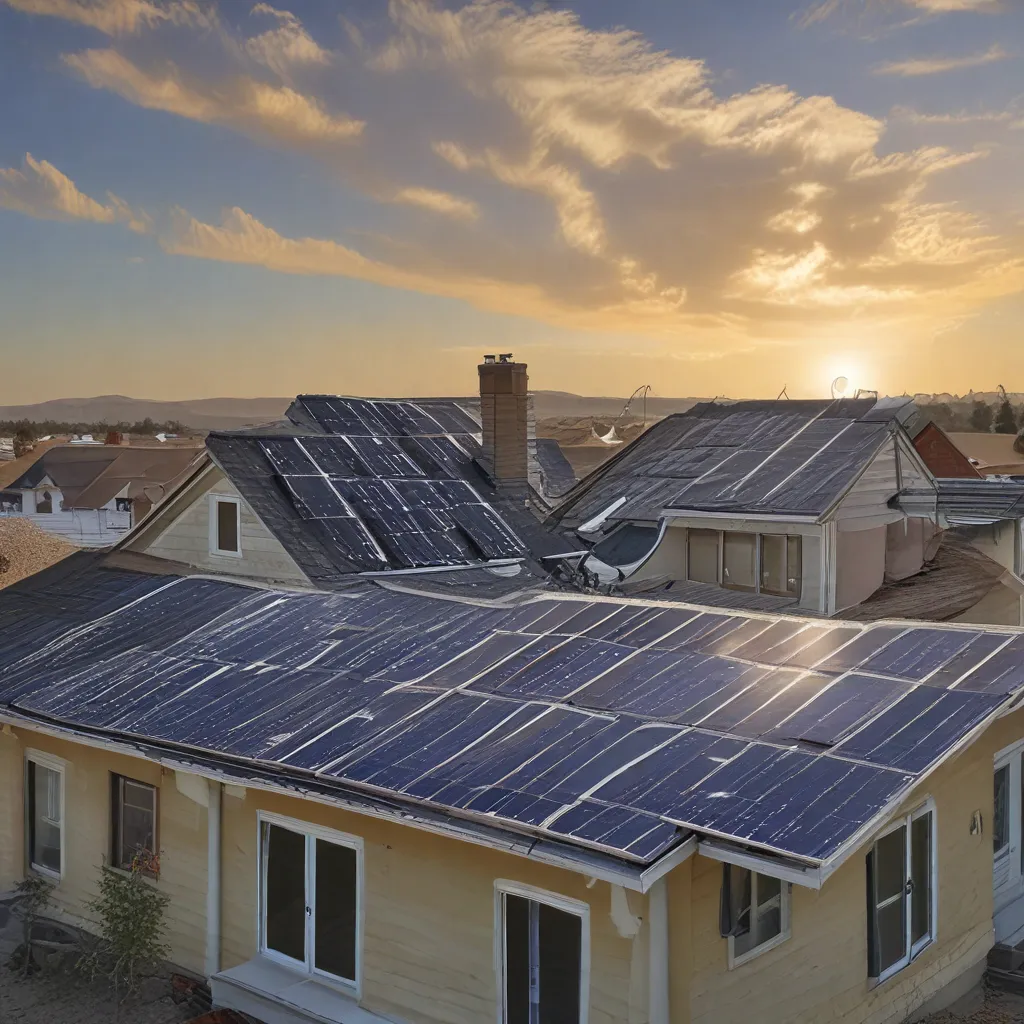
Tapping into Uncle Sam’s Solar Piggy Bank: A Race Against the Clock
As a proud homeowner, I’ve always been fascinated by the idea of harnessing the power of the sun to power my abode. But let’s be real, the upfront costs of solar panels can be a bit daunting, even for the most ardent eco-warrior. That’s why I was thrilled to discover the federal solar tax credits – the government’s way of saying, “We’ve got your back, buddy!”
Now, I know what you’re thinking: “Tax credits? Sounds about as exciting as watching paint dry.” But trust me, my friend, these credits are the key to unlocking serious savings on your solar investment. And the best part? They’re set to phase out in the coming years, so it’s time to act fast if you want to cash in.
Understanding the Residential Clean Energy Credit
The official name for this little financial gem is the “Residential Clean Energy Credit,” and it’s offered by the good ol’ IRS. Essentially, it’s a tax credit that equals 30% of the costs of installing new qualified clean energy property, like solar panels, for your home.
According to the IRS, the credit percentage rate phases down to 26% for property placed in service in 2033 and 22% for property placed in service in 2034. After that, the credit is set to expire, unless Congress decides to extend it.
Now, I know what you’re thinking: “30%? That’s a pretty sweet deal!” And you’re absolutely right. But here’s the kicker – the credit is non-refundable, which means it can only be used to offset the amount of taxes you owe. But don’t worry, if you have any leftover credit, you can carry it forward to future years.
Qualifying for the Credit: What You Need to Know
Alright, let’s dive into the nitty-gritty of who can claim this credit. First and foremost, you need to be the owner of the property, whether it’s your primary residence or a second home. Sorry, landlords, this one’s not for you.
According to the Department of Energy, the solar PV system doesn’t even have to be connected to the grid to qualify. As long as it’s generating electricity for your home, you’re good to go.
But wait, there’s more! The credit can be claimed for a variety of clean energy upgrades, including solar panels, solar water heaters, geothermal heat pumps, and even battery storage technology. Just make sure your shiny new toys meet the necessary standards to pass the IRS sniff test.
And here’s a fun little twist – the credit doesn’t just apply to new systems. You can also claim it for improvements made to your existing home, as long as the installation was completed during the tax year. Talk about a double-whammy of savings!
Maximizing Your Tax Credit: Navigating Subsidies and Rebates
Now, let’s talk about those pesky subsidies and rebates. The IRS has some specific rules when it comes to how they impact your tax credit.
According to the IRS, any public utility subsidies or rebates you receive for your clean energy upgrades must be subtracted from your qualified expenses before calculating the credit. But don’t worry, any net metering credits you earn from selling excess energy back to the grid don’t count against you.
On the other hand, state-level rebates and incentives generally don’t affect your federal tax credit. That’s a win-win in my book!
Now, let’s talk about that pesky $10,000 cap on the state and local tax (SALT) deduction. According to the Department of Energy, if you’re still paying more than $10,000 in SALT after claiming a state tax credit, the state tax credit benefit won’t be reduced by the federal tax rate. Phew, one less thing to worry about!
Timing is Everything: Maximizing Your Savings Before the Credits Disappear
Alright, let’s talk about the elephant in the room – the fact that these tax credits are slowly but surely fading away. As I mentioned earlier, the credit percentage rate is set to drop from 30% to 26% in 2033, and then down to 22% in 2034. After that, it’s curtains, unless Congress decides to step in and save the day.
So, if you’re considering going solar, there’s never been a better time to act. Solar As Systems Inc. can help you navigate the process and ensure you’re taking full advantage of these incredible savings before they disappear.
Think about it this way – the longer you wait, the more you’ll be leaving on the table. It’s kind of like a race against the clock, but with the added bonus of lowering your energy bills and reducing your carbon footprint. Talk about a win-win-win!
Overcoming the Obstacles: Financing Your Solar Dreams
I know what you’re thinking, “But Matt, solar panels are still so expensive! How am I supposed to afford all this?” Well, my friend, I’ve got some good news for you.
According to the Department of Energy, you can actually claim the full tax credit even if you financed the system through the seller. As long as you’re contractually obligated to pay the full cost, you’re good to go.
And let’s not forget about those state-level incentives and rebates. When you combine the federal tax credit with local programs, the upfront costs can start to look a lot more manageable. Plus, Solar As Systems Inc. offers a variety of financing options to help make your solar dreams a reality.
So, what are you waiting for? The clock is ticking, and the opportunity to cash in on these incredible savings is slipping away. Embrace your inner eco-warrior, and let’s get you hooked up with some sun-powered goodness before it’s too late!


